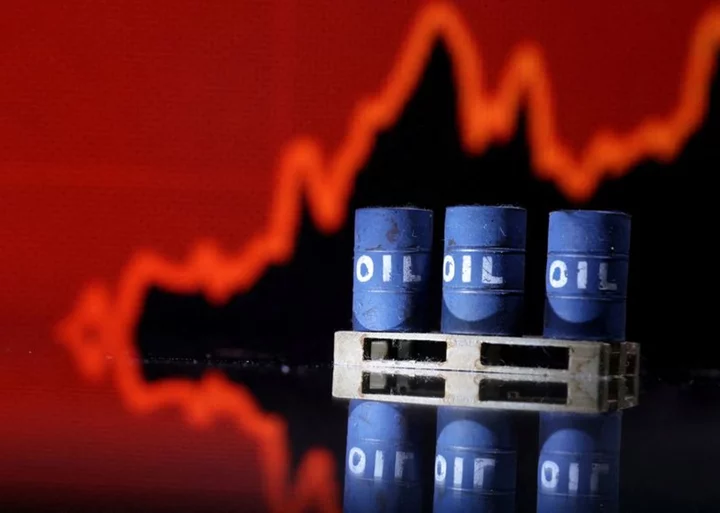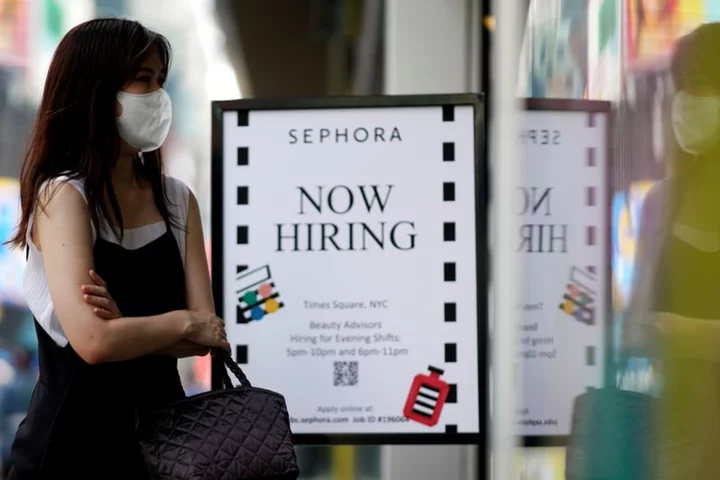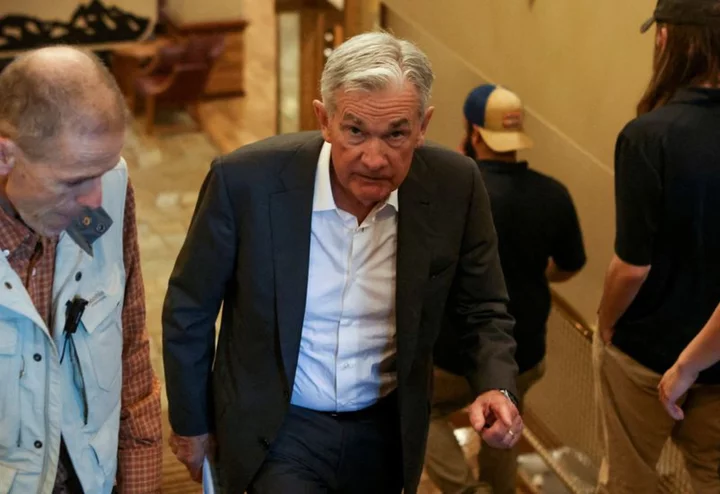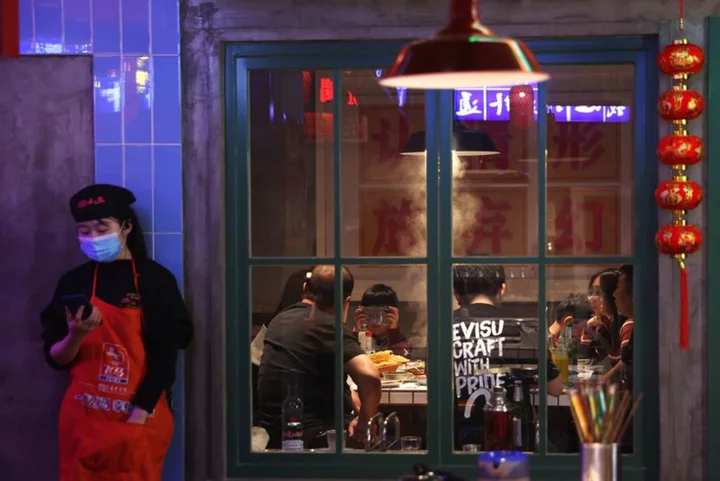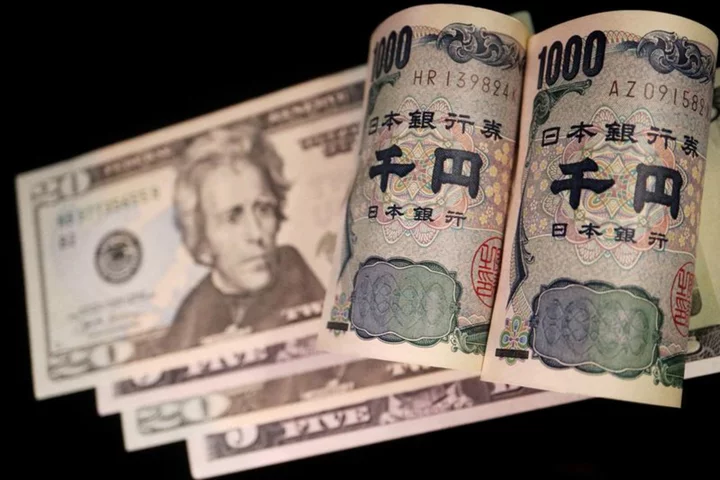Federal Reserve Chair Jerome Powell seemed uncharacteristically relaxed yesterday at the European Central Bank conference in Portugal. The Fed head shed his reading glasses and wore his shirt collar open with no tie as he cracked jokes alongside a panel of his central banking contemporaries.
Powell didn't just ditch his tie, he also ditched his script.
When asked how the Fed plans for the worst case scenarios on the geopolitical front, he first responded in Fedspeak. "We use our tools to achieve our legal mandates," he said. But when pushed, he opened up about a top-secret Fed tool: the Teal Book.
At every Fed policy meeting, he said, "our staff works up six or seven or eight alternative simulations," he said. "All the participants read those and think about them and talk about them. It's very helpful because you can't get too focused on the modal paths in a world where it's very hard to predict the economy," he said.
What would happen to the economy in an oil crisis, if US-China tensions accelerate or if there's another pandemic that shuts down the economy? Federal Reserve officials might know, or at least they think they do.
What's happening: Every year, the Fed performs stress tests to examine whether the nation's biggest banks can withstand a severe economic crisis. But every six weeks, the central bank also secretly stress tests its own policy decisions — assessing how interest rate hikes would stand up against a bevy of economic, geopolitical and other exogenous situations (think: global pandemic).
Policymakers rarely discuss this exercise. The data and conversations about it are considered classified information and are kept private for five years. Even when they're released, certain parts of the discussion are blacked out. But they're immensely important in guiding Fed decisions.
"If one wondered how the Fed responded in near real time during the Great Financial Crisis or during our more recent Pandemic Era Crisis with very innovative policy responses, it's due to the systematic work on crisis response around a wide variety of scenarios and simulations conducted by the central bank," said Joe Brusuelas, chief economist at RSM.
"They are carefully managed within the bank leadership and provide insight into policy options for the Fed under an array of various shocks that range from domestic financial crises to external events such as an oil crisis caused by conflict in the Middle East," he added.
Bloomberg called Stacey Tevlin, the woman in charge of the Teal Book, "the most important person in US economics that you have probably never heard of." In a rare interview with the outlet last year, she gave some insight into modeling the scenarios that affect the trajectory of monetary policy. "There is definitely a lot of judgment we are imposing on this," she said. "We don't think people will react exactly as they have in the past. We have a lot of debates on this as a staff."
During the height of the pandemic, for example, her team presented policymakers with forecasts for both the course of the virus and vaccine availability to help aid them in their decisions.
The market impact: The policy scenarios considered by the Fed are quite sensitive. "Imagine how the market would have reacted if it knew that [former Fed Chair Ben Bernanke] was gaming out a financial crisis due to the housing sector in 2005," said Brusuelas.
The Fed releases its economic projections to the public in the form of a dot plot four times a year, but there's so much that we don't see, said Philippa Dunne of TLR Analytics.
Teal Books and transcripts from 2017 (the most recent that have been released) show Fed members openly discuss how they feel about the ramifications of ongoing political issues. "It's too bad they don't release these in real time," she said.
Still, the Federal Reserve relies on its status as an independent agency, not subject to political oversight, said Danielle DiMartino Booth, CEO and chief strategist at QI Research and a former Fed economist. "If some senator was able to see how the Fed was making decisions about inflation in real time, then they could theoretically attack them," she said.
That's likely why when Powell was asked about the scenarios the Fed had most recently considered, he stayed mum. "I'm gonna leave that to your imagination," he said.
This is Bidenomics, folks.
Meet Bidenomics, which President Joe Biden formally introduced to the US on Wednesday as "growing the economy from the middle out and the bottom up, not the top down."
This ain't trickle-down Reaganomics, folks.
"Bidenomics is about the future," said Biden during a speech in Chicago on Wednesday. "Bidenomics is just another way of saying: Restore the American dream."
But the economy's track record under Biden is a mixed bag, according to my colleagues Elisabeth Buchwald and Bryan Mena.
Americans have grappled with high inflation rates for more than a year, including painfully unaffordable housing, as the Federal Reserve raised interest rates 10 times in a row to bring that inflation down.
In addition, a tight labor market has left many small businesses with ongoing hiring difficulties. Meanwhile, in anticipation of a recession, large companies have tightened their belts and resized their workforce by laying off thousands of workers.
But it hasn't all been bad. American workers have rejoiced in a robust labor market that has allowed them to quit their jobs for a better one — one that can pay them more or allow them the flexibility of working from home.
Many Americans were given a financial boost during the Covid pandemic in the form of stimulus checks and a break from student loan payments, although the latter are restarting later this year.
Read more about what Biden can, and cannot, take credit for here.
McDonald's bet on viral success with its Grimace shake. TikTok users are pretending it killed them
What are the youth of America up to these days? They're posting elaborate TikToks where they pretend that the McDonald's Grimace shake has killed them, of course.
With a vibrant purple hue, a meme-able mascot and limited window of availability, McDonald's had all the ingredients to turn its Grimace milkshake into a viral sensation, reports my colleague Scottie Andrew.
What the company likely did not intend was for the shake's success to come from TikTok users playing dead.
Since the debut of the Grimace shake earlier this month, TikTok users have been excitedly ordering the shake, released in honor of McDonald's character Grimace's "birthday," and then pretending to die on camera after consuming the purple beverage. They often dump the shake over their convulsing bodies, apparently signaling that Grimace, that bumbling bestie of Ronald McDonald, killed them, writes Andrews.
That sounds pretty negative. But some analysts say it's actually a sign of Gen Z's respect for McDonald's.
"What may seem like negative expression is actually a positive reflection of their ability to connect with a generation," said Matthew Prince, an adjunct professor of social media and influencer marketing at Chapman University in California. "It's getting the views, it's getting the laughs and, as the viral trend grows, it's getting the sales."
When reached for comment, McDonald's referred CNN to a tweet from Grimace: "meee pretending i don't see the grimace shake trendd," along with a photo of the purple one himself, eyebrows raised.
McDonald's stock is up about 11% so far this year.


